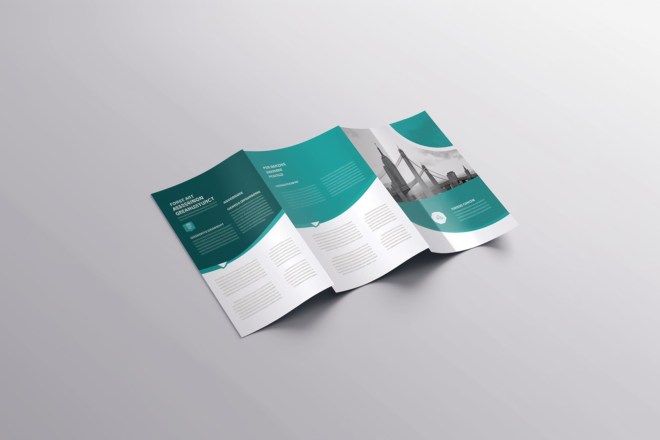In today’s competitive job market, your resume should highlight the best parts of your professional achievements and career goals. Of course, it also demands presenting a resume format recruiters and hiring software can easily read.
Structuring your resume accurately could be the very thing standing between you and your dream job. This guide will break down the ins and outs of an ideal resume format, list the most critical elements to include, and deliver helpful resume writing tips.
Understanding Your Dream Career
Before writing your resume, you must clearly understand your dream career. Researching the industry and position and the qualifications, experience, and education required is the foundation of an effective resume format.
Compare your background and skill sets to your dream career and write down what you already know, what you are learning, and where the knowledge gaps are.
Identifying industry trends — such as new technologies expected to advance in your field — is especially important. You’ll want to stay adept in these technologies to ensure competitiveness among other candidates.
Elements of an Effective Resume
An effective resume gets you the job. As such, you’ll want to select a readable format with all the vital elements. A solid resume takes time and planning to get it just right. The following components will help you succeed:
Resume Format
The three most common resume formats are chronological, functional, and combination. Each is suitable for different job candidates — the trick is knowing which one you should use.
Chronological
Most job seekers should format their resume in reverse chronological order. This resume format comprises a list of professional achievements and work history, starting with the most recent job.
Hiring managers prefer this format because it’s easy to skim. It is also compatible with Applicant Tracking Systems — also known as ATS — ensuring software can scan it efficiently.
Functional
Unlike the reverse chronological resume format, a functional resume lists your skills first and gives supporting information about how you applied them to previous work.
Only use a functional resume if you are a recent college graduate with little work experience, are changing careers, or have unemployment gaps. Some recruiters may question why you lack work experience or suspect red flags, such as dishonesty or a previous termination.
Combination
A combination resume draws from chronological and functional formats, emphasizing skills and professional experience. Junior and mid-level candidates with 1–3 years of experience can use this hybrid resume to highlight industry skills acquired since graduation.
Although your skills section still comes before your work experience — similarly to the functional resume — your professional experience should heavily support and elaborate on the soft and technical skills mentioned.
Structuring the Resume
You’ll want to include six key elements when structuring your resume. Leaving them out could land your resume in the “discard” pile. Of course, their placement on the document depends on the resume format you choose.
Contact Details
Regardless of resume format, your contact information should appear at the top of the page. It’s best to bold and enlarge your name for easier identification. Most candidates include their phone number and email address and link to their LinkedIn profile or portfolio and location.
Your city and state should suffice — many people forgo listing their home addresses for privacy reasons. Likewise, ensure your email address is appropriate — you wouldn’t want to use the same silly email address you did in high school.
Professional Summary
Your professional summary should appear under your name and contact details, delivering an overview of your candidacy. Highlight the most significant accomplishments and expertise relevant to the career and industry.
Skills and Qualifications
Your resume should include 9–12 soft and technical skills to underscore your abilities. Listing software and programs is essential, especially if relevant to your dream career. However, don’t forget to include soft skills. About 93% of employees say soft skills are crucial, including reliability, flexibility, and a willingness to learn.
Work History
Once you’ve decided on your resume format, list your previous roles, starting with your current position. Include a few bullet points under each, describing your responsibilities and achievements. Quantifiable triumphs are also crucial to showcase your abilities.
Education
Position your education near the end of your resume, including the institution’s name, degree title, major, and years attended. You may choose to leave your graduation date off, depending on age. Likewise, only include your grade point average if you graduated within three years and received a 3.5 or higher.
Miscellaneous Sections
Other sections to include in your resume are certifications, licenses, awards and honors, publications, volunteer work, and projects. However, anything you include should be relevant to the job.
Tailoring Your Resume for a Job
ATS programs use advanced algorithms to screen for keywords in your resume — this helps recruiters sift through qualified candidates for specific positions. Tailor your resume for each position in the following ways:
- Customize your resume to match keywords, skills, qualifications, and programs directly from the job description.
- Research the company to understand its mission, values, and goals.
- Spend more time on the top half of your resume.
- Adjust your target title to the position.
- Customize the professional summary to match the job description.
- Select relevant miscellaneous sections based on the job description or company.
Tailoring your resume may seem tedious, but it is essential if you want your resume to get past ATS and into a recruiter’s hands.
Bringing Creativity to Your Resume
When it comes to a resume format, creativity is more about making practicality aesthetically appealing than going out of the box. Even so, you can still tweak your resume in ways other applicants may not. Try these effective tips for getting noticed through strategic creativity.
Include Icons
Icons impress employers because they’re subtle yet impactful. Recruiters often skim through resumes to get the answers they need, making this approach more effective. For instance, they’d instantly realize the connection between a small envelope icon and an email address.
Besides keeping their eyes moving across the entire resume, this tactic draws their attention to crucial points. This is critical because they usually spend so little time on every candidate.
Order Experience Creatively
While it seems like a creative resume format would impress employers, they often prefer legible content over flashy designs. It only takes a few seconds to make an impression, so proper formatting is essential.
Generally, applicants should format their resume so it’s two pages or less. Additionally, they should try to use reverse-chronological order, giving employers the most relevant information quickly.
Still, sticking to a traditional resume format doesn’t have to feel boring. On top of their skills, education, work history, and contact information, people can make additional sections. For example, they could include honors, awards, or industry knowledge.
Choose the Right Typography
Even though most experts recommend leaving out graphics and images, it’s still possible to make a resume format creative. Focusing on typography is ideal since it capitalizes on readability and design appeal.
While most people stick with their computer’s default font, changing it can be beneficial. Graphic design recruiters often look for people who understand which fonts offer stylish readability.
Still, it’s essential to keep potential technological limits in mind. According to one survey, 99% of the largest companies in the United States use ATS to filter resumes. This software can usually only read classic fonts like Times New Roman or Arial.
However, many ATS tools are advancing so fast that this may soon become a limitation of the past. For instance, most modern ATS typically relies on artificial intelligence (AI) with natural language processing capabilities to read through and filter resumes.
Use Custom Bullet Points
Bullet points are essential to resumes because they make them much more skimmable. Additionally, they can help the AI in the ATS find relevant information, increasing the chances of humans reading the document.
Any symbol can be a bullet point as long it’s small, dark, and uniform. However, it’s important to properly format the list so ATS software can read it.
In fact, around 94% of employers feel their ATS overlooks skilled candidates by removing them from the applicant pool if they aren’t an exact match for its preset standards
Each bullet should go under a clear, straightforward header like “skills” or “education” even though they’re not creative. The AI may have trouble categorizing bulleted lists that say something like “where I studied” or “what I achieved” instead.
Use a Custom Logo
A custom logo will impress recruiters as long as it looks professional and high-quality. For example, the applicant can create a miniature graphic of themselves, stylize a basic icon, or create a logo from scratch. It should sit in the same place on the resume and cover letter to connect them.
A recruiter is more likely to remember someone with a unique visual identifier they subconsciously attach to their name. Plus, it wouldn’t cause issues with ATS software.
Make Paragraphs Into Snippets
Even if a resume makes it past AI screening tools, a recruiter will spend around three minutes of their time on it at most. Also, they often develop an opinion on the applicant far sooner than that. Turning paragraphs into information snippets can appeal to them, raising the chances they’ll continue reading.
A streamlined resume format is much more visually appealing than one with long, clunky groups of text. It makes the document much easier to read, meaning recruiters can quickly determine what’s important. Plus, they should appreciate the thoughtfulness and organization.
Consider the pro tip that quantitative data draws attention. For example, applicants should write how they improved operations by a certain percentage rather than simply stating they did.
Include Social Media Handles
Once a recruiter looks through a resume, it only takes them one minute on average to decide whether to schedule an interview. Be creative enough to catch their attention, but stay within the traditional resume format to get past AI screening tools. Including social media handles may be the best approach.
In fact, around 84% of employers recruit through social media, while 43% use it to screen candidates. Using custom icons or designing a graphic to accompany the handles would impress them. Plus, people who are more private can just connect their LinkedIn or any other professional platform.
Utilize Empty Space
The empty parts of an applicant’s resume are as important as the text-filled ones. Instead of writing everything in blocks next to each other, utilize white space to give the information a hierarchy.
Each part of the document will appear more meaningful with its own space, and it can hold a recruiter’s attention for longer. They’ll also likely appreciate how the change is so subtle yet visually appealing.
There are dozens of ways to creatively use white space. For example, an applicant could separate every section with a thin horizontal line. Alternatively, they could keep the headers on the left side of the page and the information on the right.
Have a Colorful Background
A recruiter will only spend up to seven seconds looking at a resume on average, so intriguing them is crucial. Blocks or stretches of color would make a document stand out in a pile of black and white. Plus, an ATS could still read dark text on a light background.
Instead of making the entire background colorful, applicants should try adding a bright square behind the contact section or using a strip of color down the length of the document. It’s important to consider what will look best and have the most impact.
Include a QR Code
Many people think putting a picture on their resume will make them stand out, especially with companies starting to diversify their workplaces. That’s reasonable logic, but putting any identifying images on a resume is not a good idea.
On top of taking up valuable formatting space, it could unconsciously bias the recruiter before the applicant gets invited to interview. Someone who wants to showcase some of their personality should use a QR code instead.
It can highlight their creativity or skills before an interview. For example, they could link the code to their portfolio, a business card, or a custom graphic. Plus, QR codes are instantly recognizable, prompting recruiters to scan them.
Resume Writing Reminders
Writing your resume is tricky. Obviously, you want to include as much information about yourself as possible in a limited space. Consider the following tips for success:
- Include industry buzzwords for your position.
- Hone in on positive outcomes and achievements throughout your work history.
- Format your work history with bold and italicized text and bullet points.
- List the most relevant or essential information first.
- Ensure your professional summary makes an impact.
- Don’t just focus on yourself — find ways to bring value to the organization.
- Regularly update your soft and technical skills.
- Write solid and action-oriented statements.
- Avoid generalized words and cliches — 53% of employers discard resumes for including too many cliches.
Most importantly, you must always proofread and edit your resume before submitting it to a company. Consider using an AI tool to help. One study found doing that caused an 8% boost in the likelihood of getting hired.
Additional Tips for the Perfect Resume Format
The ever-loved objective statement is obsolete in this new age of writing resumes and looking for work. Instead, your professional summary or branding statement should read like an elevator pitch to grab attention.
Submit a Word document version of your resume to an ATS system, as some cannot read PDFs. A PDF is preferable if you email a resume directly to a recruiter or employer.
A Smart Resume Format Gets You the Job
Your resume is one of the most critical components of job hunting. Submitting the correct resume format based on your background, aptitude, and career level will ultimately lead you to your dream career at a great company.


